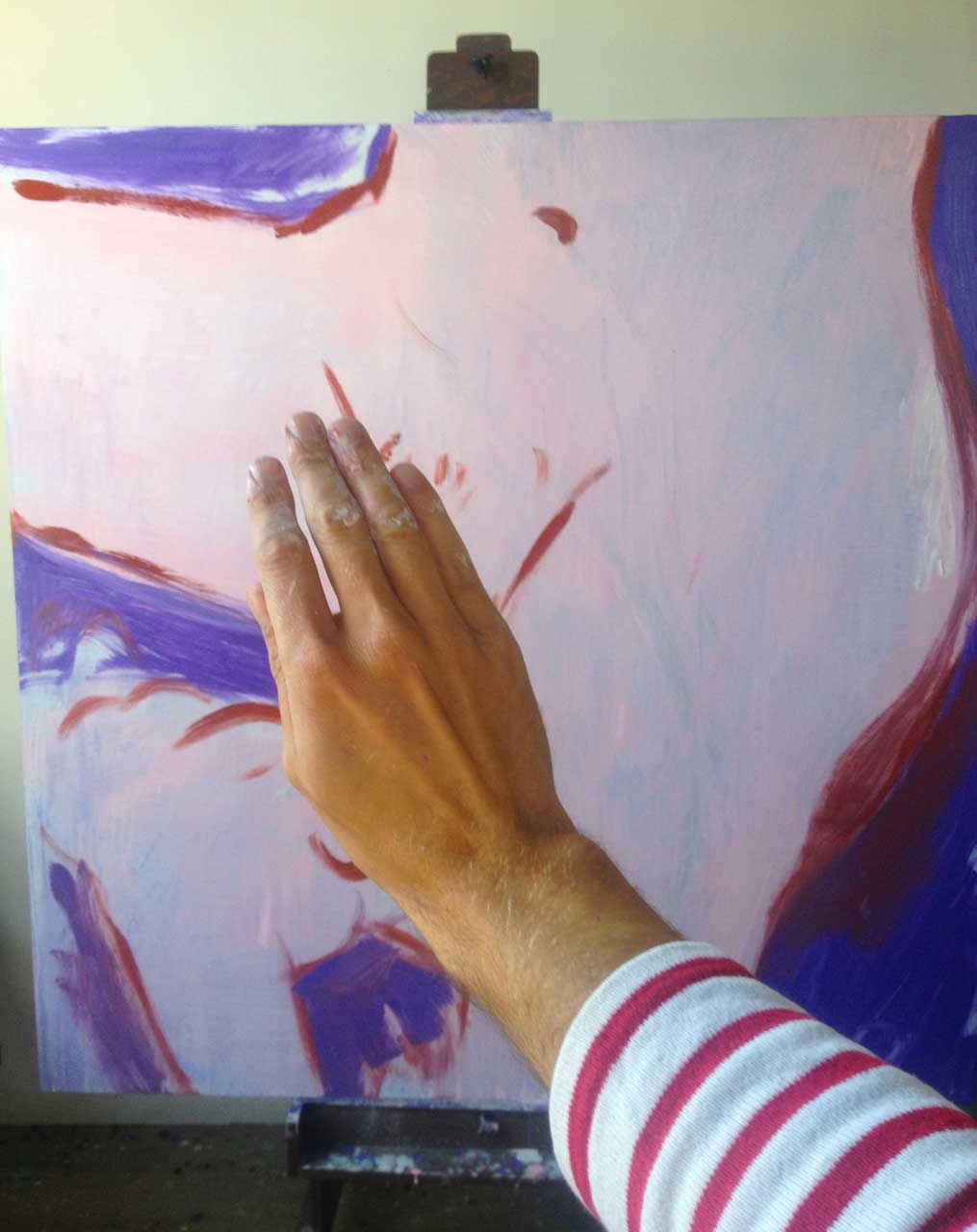With my gazpacho chilling in the refrigerator, I collapsed on the porch, enjoying the final moments of calm before my dinner guests arrived; a cold Kamchatka and cola in my hand and the sound of the surf against the dunes below my summer house in Amagansett.
It was then that an absolutely intolerable notion took hold of me. Try as I might, I could not shake it loose. What if – and I shudder at the very thought – the public was to grow tired of my garishly huge paintings of vaginas in a variety of alluring positions, sometimes coupled with penises but just as often not? What would I do then? My lack of any strategy was troubling to say the least, and I now stand on the precipice of a full-fledged crisis.
The thought of painting lonely, drab, inactive vaginas for the rest of my life is horrifying!
I’ve experimented with form before. Oh, yes! With varying degrees of success. After all, my giant plush foam vagina sculptures were a real success with viewers and critics alike. But not all mediums articulate with equal measure the subtleties of my obsessions. Namely: vaginas and penises, often apart but sometimes together. For instance, I’ve found that when you shoot video of a vagina with a penis going in and out of it for several minutes, it kind of just becomes… pornography.
Regardless of your pointing out to anyone and everyone that it is not. In fact, I grew to suspect that the wall text for my show at PS1 – intended to communicate that the work, despite bearing superficial similarities to a particular subset of pornography, was actually contemporary art – achieved exactly the opposite of its intended function, amplifying the problem and making things much, much worse.
So the question I am now faced with is this: do I tamp down the sex thing or ramp it up? Ramping it up is, of course, my initial impulse. And a fine impulse it is! But ramp it up to what? My imagination fails me! After all, there’s only so much you can really do with a vagina before it stops making any visual sense! The thought of painting lonely, drab, inactive vaginas for the rest of my life is horrifying!
As I’ve often flattered myself that I am the Morandi of hot fucking, perhaps it is he I should turn to in my hour of distress. What would Giorgio do? Approach the silken vulvas as though they were merely form? Address them only as a vehicle for light and shadow? An excuse for the application of paint and colour? But how? Is colour the problem?
I suppose, when I think about it, maybe I can see how my rich bright hues might give too much of a ‘party vibe’ to the vaginas I paint. And vaginas don’t just party all the time, do they? Has any painter ever addressed the workaday vagina? One must assume they spend a good deal of time in repose, tucked away, nestled cosily behind twills and denim, biding their time, preparing for attack. But how shall I paint this vagina waiting in the wings?
Another thing I must contemplate, and I’m really considering all angles today, is the possibility that I am confusing the situation when sometimes including penises in the paintings but just as often not. Maybe I should either always put them in or banish them altogether. They are, after all, not my primary focus. My primary focus is and has always been vaginas, so it’s entirely possible that I’m muddling my message.
A vagina alone suggests one thing, but add an erect penis to the mix and I’m beginning to sense it brings up a variety of issues – subtexts and narratives I hadn’t necessarily accounted for. Though I’m still uncertain as to why. In any case it’s well documented that the audience is an easily confused mob of yahoos the artist should despise and fear.
But to strike the bright colours and the penises? The thought of painting lonely, drab, inactive vaginas for the rest of my life is horrifying! A grim inky blackness settles over my mood. Oh, God! What am I to do?
As I write this I hear the first of the dinner guests arriving. Their tyres popping and pinging against the driveway’s pebble surface. And me in a funk. It’s going to be a very difficult evening.
This article was first published in the November 2013 issue.
